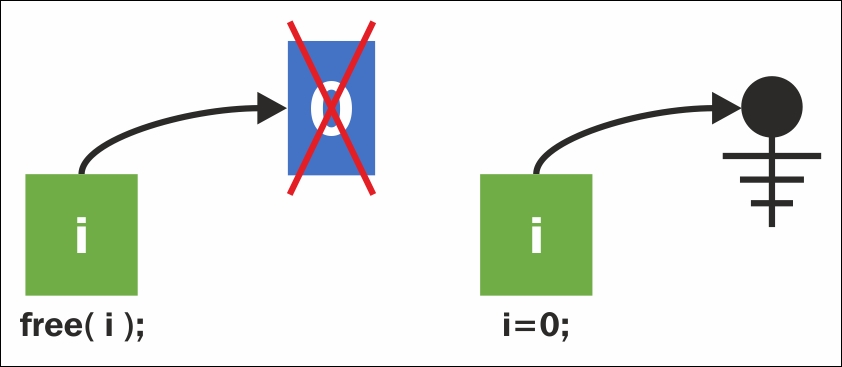The basic way to allocate memory for your computer program in C (and C++) is by using malloc(). malloc() designates a block of the computer system's memory for your program's use. Once your program is using a segment of memory, no other program can use or access that segment of memory. An attempt to access a segment of memory not allocated to your program will generate a "segmentation fault", and represents an illegal operation on most systems.
Let's look at an example code that allocates a pointer variable i, then assigns memory to it using malloc(). We allocate a single integer behind an int* pointer. After allocation, we store a value inside int, using the dereferencing operator *:
// CREATING AND ALLOCATING MEMORY FOR AN INT VARIABLE i int* i; // Declare a pointer variable i i = ( int* )malloc( sizeof( int ) ); // Allocates system memory *i = 0; // Assign the value 0 into variable i printf( "i contains %d", *i ); // Use the variable i, ensuring to // use dereferencing operator * during use // RELEASING MEMORY OCCUPIED BY i TO THE SYSTEM free( i ); // When we're done using i, we free the memory // allocated for it back to the system. i = 0;// Set the pointer's reference to address 0
The preceding code does what is shown in the diagram that follows:
- The first line creates an
int*pointer variablei, which starts as a dangling pointer referring to a segment of memory that probably won't be valid for your program to reference. - In the second diagram, we use a
malloc()call to initialize the variableito point to a segment of memory precisely the size of anintvariable, which will be valid for your program to refer to. - We then initialize the contents of that memory segment to the value
0using the command*i = 0;.
When the memory in the variable i needs to be released back to the system, we do so using a free() deallocation call, as shown in the following diagram. i is then assigned to point to memory address 0, (diagrammed by the electrical grounding symbol reference ![]() ).
).

The reason we set the variable i to point to the NULL reference is to make it clear that the variable i does not refer to a valid segment of memory.
